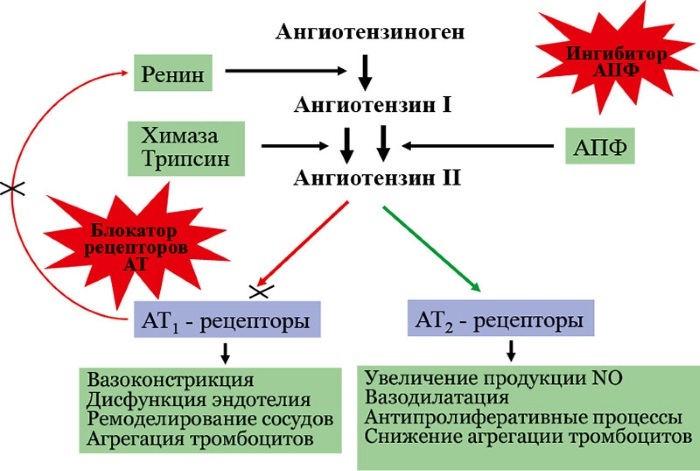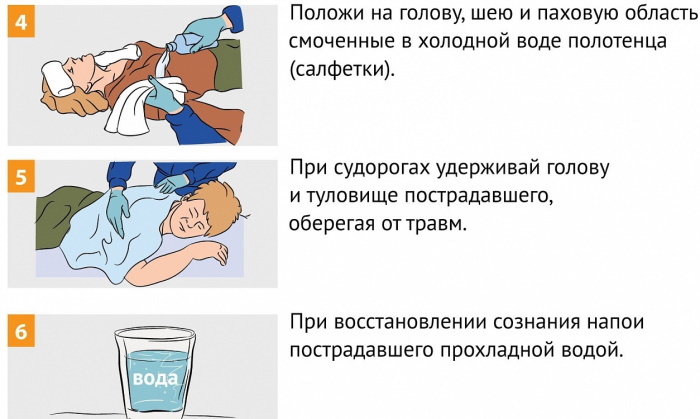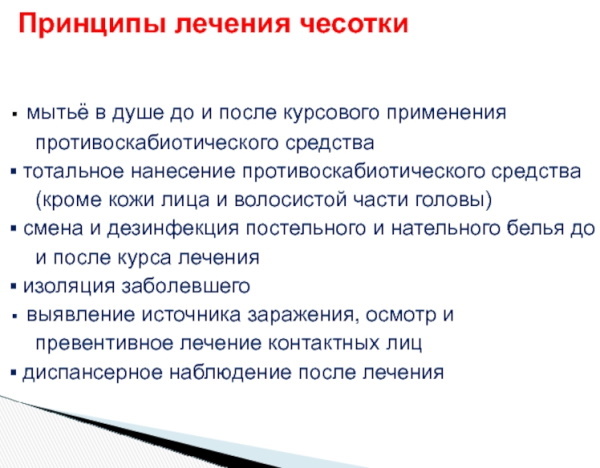Content
- Indications for use
- Contraindications
- Possible complications
- Training
- General rules for applying a bandage mitten
- Procedure step by step
- Care procedures after
- Advantages and disadvantages
- Video about bandaging mittens on a brush
Bandage mitten is applied over the entire area the patient's hand using a sterile gauze bandage, medicines with antiseptic and wound-healing properties. This therapeutic procedure is carried out in the field or in a hospital in a medical institution, depending on the type and nature of the hand injury. A bandaged upper limb requires daily care to prevent complications.
Indications for use
The bandage mitten is fixed on the surface of the hand during the provision of planned or emergency care to patients with injuries of the upper limb. Therapeutic manipulations of this type are carried out in the hospital of the trauma or surgical department.
A bandage mitten is applied to one or two hands at once in the following clinical cases:
- frostbite of the upper limbs with deep tissue damage;
- damage to the hands of thermal, chemical or electrical burns;
- gunshot and mine-explosive wounds that require closure with sterile dressings to prevent secondary infection;
- damage to the soft tissues of the hand as a result of stabbing;
- severe bruises of the hand with the formation of an extensive hematoma;
- injuries of the wrist joint caused by shock, falls, accidents at work;
- dermatological diseases associated with a violation of the integrity of the skin of the upper extremities.
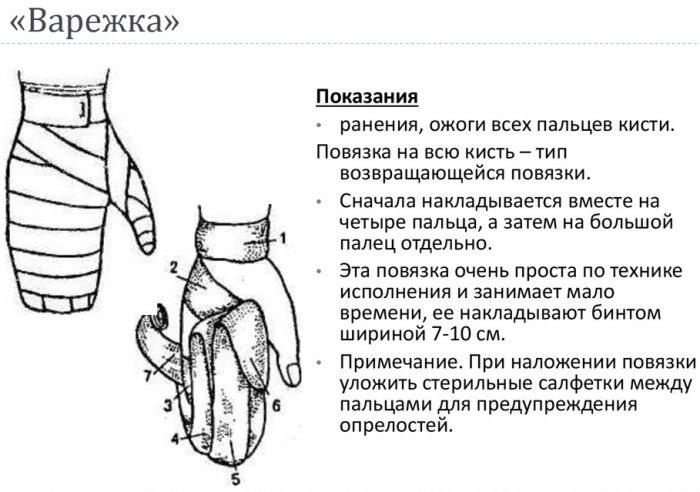
The main purpose of applying a mitten bandage to the hand is to cover the skin surface of this part of the hand. from the pathogenic effects of pathogens, as well as accelerating the recovery process fabrics. Under conditions of sterility and treatment with antiseptic agents, cell regeneration in the area of the wound parts of the hand occurs 2-3 times faster, the development of infectious and inflammatory process.
Contraindications
The bandage of the mitten on the hand should only be applied by a specially trained healthcare professional who has the appropriate qualifications, as well as practical experience in providing medical care for this directions.
Applying a sterile dressing to cover the entire surface of the hand below the wrist joint is contraindicated in the following cases:
- severe fracture of the upper limb, requiring immobilization of bone tissue by the method of casting;
- rupture of great vessels with profuse bleeding, which cannot be stopped with antiseptic dressing (in this case, the patient needs a surgical operation to suture vascular tissue);
- multiple hand injuries, in which the preservation of the hand is impossible due to the high probability of an early development of necrosis (deep burns of 4 degrees, severe mine blast injuries requiring surgical amputation);
- infectious and inflammatory process in the tissues of the upper limb, which has passed to the stage of gangrene (patients with such a diagnosis requires preliminary sanitation of the infected tissue by means of an operative interventions).
The decision on the advisability of applying a bandage of a mitten to the surface of the hand is made by the attending physician of the patient, or by a junior medical worker who provides first aid to the victim. After this therapeutic procedure, all patients undergo further outpatient or inpatient treatment aimed at the complete restoration of the tissues and functions of the hand.
Possible complications
The bandage of the mitten on the hand is fixed at the initial stage of treatment of burns and mechanical injuries of the upper limb.
Untimely closure of the wound surfaces of the hand, ignoring or violating the norms of sterility and the rules for bandaging the hand leads to the development of the following complications:
- slow healing of damaged tissues with an increased risk of infection with pathogens;
- accession of a bacterial, viral or fungal infection;
- suppuration of the wounds of the hand with the spread of the inflammatory process into the deep tissues of the upper limb;
- osteomyelitis of the bone of an infectious nature of origin (one of the most severe complications that can lead to the loss of an arm);
- death of tissues affected by thermal, electrical or chemical burns;
- sepsis, which develops against the background of extensive bacterial infection of the injured hand.
Complications associated with improper application of the mitten bandage, or complete ignorance of this therapeutic procedure, diagnosed by external examination of the upper limb and radiography bone tissue.
The patient's hand acquires a purple or bluish tint, becomes edematous, painful, exudes an unpleasant putrid odor. To prevent the development of negative consequences, it is necessary to strictly observe the standards of sterility, impose bandage bandage mitten according to the established scheme, timely perform care procedures with replacement of consumables materials.
Training
The bandage of the mitten on the hand is applied under sterile conditions after antiseptic treatment of the injured part of the hand.
Before proceeding with the bandaging of the upper limb, the medical professional must observe the following training rules:
- Equip the place of medical care with special furniture in the form of a mobile table for therapeutic manipulations and disinfection of injured areas of the body.
- Prepare in advance an anesthetic preparation, a disposable syringe with a 5 ml needle, a sterile gauze bandage with a cut width not less than 8-10 cm, antiseptic wipes and medicinal solutions for disinfecting wounds, washing them from contamination and pathogenic microflora.
- Have personal protective equipment with you to prevent infection of the patient and your own tissues. To do this, use a disposable mask, sterile medical gloves, an apron and goggles.
- A dispenser with liquid soap, an antiseptic preparation in the form of a solution of ethyl alcohol of 70% concentration and a clean, dry towel - these are hygiene products that a health worker uses to pre-disinfect the surface of his hands.
- Always have a sterile medical container filled with a medicinal product with disinfectant properties for emergency and physical treatment of injured tissues of the patient's hand. For example, if for washing and disinfecting a wound, the patient's upper limb must be completely immersed in an antiseptic solution.
- Place medical records next to the table for therapeutic manipulations the patient, which contains his medical history, contraindications to the use of certain drugs. These records are reviewed in detail by the doctor and nursing staff caring for the patient.
- A pedal bucket is placed near the medical table for disposing of consumables used in the process of applying a mitten bandage to the surface of the patient's hand.
In the ward where the patient is lying, or in the office for dressings, there must be a washbasin with clean water. When all the preparatory actions are completed, the nurse greets the patient, and then notifies the therapeutic actions that will be performed on his hand.
A conscious patient must agree to have his injured arm bandaged for medical purposes with the application of a dressing in the form of a "mitten".
General rules for applying a bandage mitten
The bandage of the mitten on the hand is applied with the obligatory observance of the general rules for applying sterile dressing material to the injured areas of the upper limbs.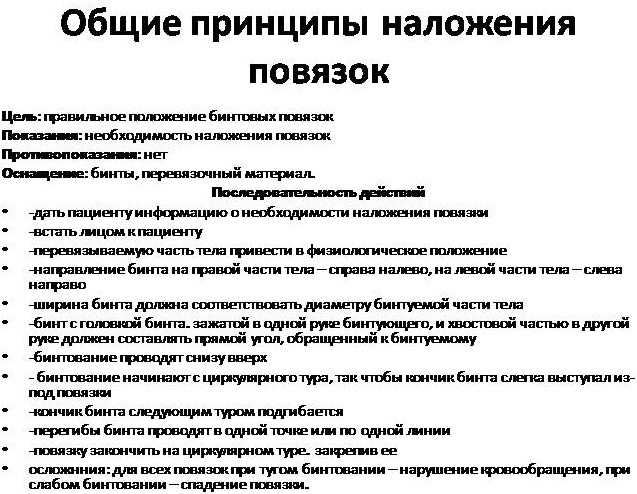
The medical professional is required to fulfill the following conditions:
- During the therapeutic procedure, the nurse is facing the patient, monitors his general condition, periodically takes an interest in the patient's well-being.
- The position of the upper limb, on which the mitten bandage is applied, should be comfortable for the patient and the healthcare professional.
- Applying a bandage mitten always begins with 2 preliminary rounds, which cover the entire patient's wrist, performing a strengthening function.
- The nurse should hold the roll of sterile bandage in the working hand. This approach will eliminate the factor of falling dressing material with automatic violation of sterility standards.
- The process of fixing the patient's hand using the "mitten" technique is always carried out from left to right. Failure to do so is a direct violation of the mitten dressing protocol.
- The next round of the bandage should overlap the previous round by at least 30-50%. This will ensure reliable fixation of the dressing on the surface of the hand and prevent it from shifting to the side.
- The last loop serves as a reliable fixation for the entire dressing. In this case, it is necessary to control that the bandage does not pinch the great vessels. Too tightly applied a bandage mitten can cause disturbances in local blood circulation, changes in the color of the skin of the hand with a predominance of bluish and purple hues.
- The bandage mitten, fixed on the surface of the hand, always begins and ends on healthy tissues of the upper limb, so that there is no squeezing effect on the injured parts of the hands.
After completing the therapeutic manipulations to apply a bandage mittens, the nurse is obliged to ask the patient about his well-being. If the dressing is fixed on the upper limb too tight, has signs of displacement or compression of the wound, then the damaged hand must be bandaged. Otherwise, there is a risk of complications.
Procedure step by step
The table below provides detailed instructions for applying a sterile bandage mitten dressing, which is designed to close the injured tissue of the hand. This dressing technique is suitable for children, adults and the elderly.
| Step-by-step algorithm of actions | Description of therapeutic manipulations |
| Step 1. Compliance with sanitary and hygienic standards | Before applying the bandage, the nurse washes her hands thoroughly with soap and water and then wipes them dry with a clean towel. After that, the surface of the hands is moistened with a solution of ethyl alcohol of 70% concentration for high-quality disinfection of the skin for the possible presence of pathogens. Disposable sterile gloves are put on top of the treated upper limbs. Unpacking of consumables of this type occurs immediately before starting the therapeutic procedure for applying a mitten bandage. |
| Step 2. Introduction of anesthesia | Patients with severe hand injuries, extensive tissue damage as a result of bruises, cuts, burns are prescribed local anesthesia. Injection anesthesia is used, which is injected into the upper limb at a distance of 5-7 cm from the localization of the wound process. Anesthesia of the injured part of the hand will allow the medical professional to carry out high-quality bandaging of the hand with a minimum level of discomfort for the patient himself. |
| Step 3. Disinfection of the wound | Open wounds of the hand must be treated with disinfectant solutions. To quickly destroy pathogenic microflora that could get on the open tissues of the upper limb, a solution of hydrogen peroxide is used. This medication is injected directly into the open wound. After disinfecting the tissues, the health worker applies an antiseptic wipe, which prevents secondary bacterial infection of the injured part of the hand. For patients with signs of bleeding, use sterile hemostatic sponges. This tool is applied over an open wound, and then the dressing is fixed. |
| Step 4. Drug imposition | Bandaging with the imposition of a medication is carried out to accelerate the regeneration of damaged tissues. An antibacterial, anti-inflammatory, wound-healing solution, ointment or gel is applied to a sterile section of the bandage, which is used to cover the injured area of the hand. From above, the injured arm is fixed with a dressing material. The medication can be applied daily during a routine dressing change. |
| Step 5. Fastening the bandage | A sterile antiseptic napkin is placed between the patient's fingers to prevent the appearance of diaper rash. After that, the nurse applies a bandage to the patient's injured arm, making 2 circular turns of the bandage around the wrist joint to securely fix the bandage. |
| Step 6. Folding the dressing | The next step in applying the mitten bandage is to bend the bandage 90 degrees with its further holding along the back of the hand towards the fingertips. Then the dressing is thrown onto the surface of the palm, directed to the wrist joint and in the opposite direction.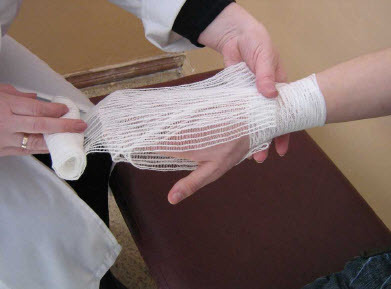
|
| Step 7. Execution of return tours | For the simultaneous closure of at least 4 fingers of the patient, repeated return tours are performed. These actions are done at least 3-4 times. At this stage of therapeutic manipulations, the patient's hand is covered with a dense layer of sterile bandage.
|
| Step 8. Circular coil application | At the wrist, the nurse flexes the dressing 90 degrees and then re-circulates. By these actions, the control fixation of the bandage mitten is carried out after its preliminary fixation. |
| Step 9. Progress to your fingertips | Immediately after performing a circulatory loop around the wrist joint, using creeping tours, it is necessary to bring the bandage to the fingertips of the injured hand.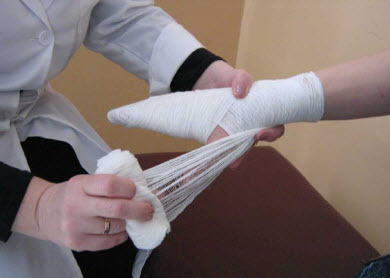
|
| Step 10. Closing the arm with spiral coils | The damaged part of the hand is closed with spiral tours in the direction from the fingertips up to the wrist joint. |
| Step 11. Reattaching the dressing | To securely fix the dressing of the mittens, the medical worker performs the next control fixation of the dressing. A reinforcement tour is performed around the entire wrist joint while maintaining an optimal level of tightness. |
| Step 12. Final fixation of the bandage mitten | The nurse leads the bandage from the control fixing loop towards the patient's thumb, wrapping it like a spike bandage. After the entire surface of the hand is covered with a sterile dressing, a final fixation round is performed around the wrist joint. |
Immediately after the mitten bandage is applied to the surface of the hand, a comprehensive disinfection of medical devices that were used in the process of treating the patient is carried out. Disposable gloves are placed in a special container for decontamination and disposal of consumables.
The nurse performs the hygiene of the surface of the hands by washing them in warm water with soap and further processing with a solution of ethyl alcohol of 70% concentration. The corresponding information about the performed therapeutic procedures is entered into the patient's medical records. Surgical instruments that were used during the antiseptic treatment of the patient's hand are placed in a tray for further sterilization.
Care procedures after
After applying a bandage of mittens to the surface of the hand, the patient needs the following care:
- Treatment of the injured part of the upper limb with anti-inflammatory, wound-healing and antibacterial agents, which is performed at least 1 time per day.
- Change of dressings daily.
- Examination of the injured tissue by the attending physician, which is carried out every morning during the round.
- Warming up the injured hand using electrophoresis or other methods of physiotherapy. This method of care is used only if there are no medical contraindications.
- Washing an open wound of the hand with antiseptic solutions to prevent bacterial infection.
Routine replacement of the bandage mittens for the hand is carried out in the hospital of a medical institution or in the dressing room of the polyclinic. Care for the damaged tissues of the upper limb continues until they are completely restored.
Advantages and disadvantages
Closing the injured hand with a bandage with a mitten has its advantages and disadvantages.
The advantages of this therapeutic procedure are as follows:
- isolation of open tissues from pathogenic microflora;
- the ability to put drugs under the dressing;
- faster healing of open wounds and burns;
- ensuring the sterility of the damaged area of the hand;
- painlessness of the procedure, since the bandage is applied under local anesthesia.
The disadvantages of the method of closing the wrist joint with a bandage with a mitten include the following factors:
- improperly performed bandaging or violation of sterility standards can lead to the development of an infectious process and other complications;
- bandaging a mitten does not save patients with deep tissue damage, the treatment of which requires surgical intervention;
- the application of this bandaging technique requires theoretical knowledge and practical experience from the medical professional;
- after applying a bandage mittens, the patient should receive daily care for the damaged hand (otherwise there is a high risk of complications).
A bandage mitten is applied to the surface of the injured hand of the upper limb in case of severe soft tissue injuries, extensive bruises, frostbite and burns.
The use of this therapeutic method allows you to protect the wound area of the hand from the negative effects of bacterial, fungal and viral microflora. Before fixing the dressing, mittens perform antiseptic treatment of the wound, close it with sterile gauze a cut soaked in ointment, gel or solution with anti-inflammatory, antibacterial, wound healing properties.
Video about bandaging mittens on a brush
Bandage Mitten:

